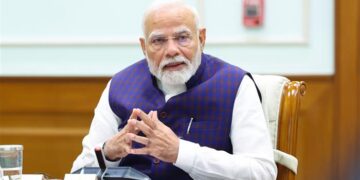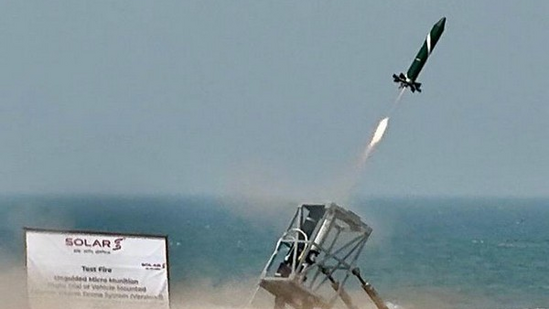India successfully tested ‘Bhargavastra’, an indigenous low-cost counter-drone system in hard kill mode, on Tuesday at the Seaward Firing Range in Odisha’s Gopalpur, days after reaching a cease-fire agreement with Pakistan following an intense four-day confrontation.
Solar Defence and Aerospace Limited (SDAL) created and built Bhargavastra, which represents a significant step forward in addressing the growing menace of drone swarms.
The tiny rockets utilized in this counter-drone device were extensively tested in Gopalpur.
On May 13, three rocket testing were performed in Gopalpur in the presence of top Army Air Defence (AAD) officers. According to ANI, two experiments were done, each firing one rocket.
One trial wasconducted by firing two rockets in salvo mode within two seconds. The study stated that all four rockets operated as planned and met the needed launch parameters, demonstrating the company’s pioneering technology in mitigating large-scale drone strikes.
The Bhargavastra is designed for fast drone interception and assured hard kills using small, guided missiles with swarm engagement capability. This technology provides mobile drone attack protection by engaging numerous drones at nearly the same time.
Highlights of ‘Bhargavastra’:
Multi-layered defence:
Layer 1: Unguided micro rockets with a 20-meter lethal radius to neutralise drone swarms up to 2.5 km.
Layer 2: Guided micro-missiles for precision targeting, already successfully tested.
Optional layer: Soft-kill methods like jamming and spoofing for integrated protection.
Advanced detection and targeting:
- Radar range of 6 to 10 km for detecting small aerial threats.
- Equipped with EO/IR sensors for identifying low radar cross-section drones.
- Offers complete situational awareness to engage single or multiple threats.
Terrain adaptability and modularity:
- Designed for deployment across diverse terrains, including high-altitude areas.
- Modular system allows configuration of sensors and launchers per mission need.
Indigenous design:
- Fully compatible with existing network-centric warfare systems.
- Indigenously developed, enhancing Make in India and self-reliance in defence.
Source: HT







 Finance
Finance







